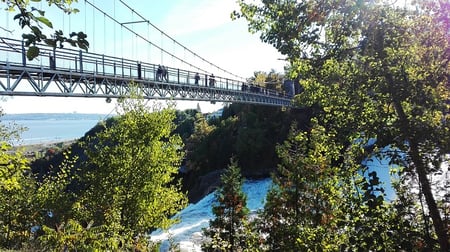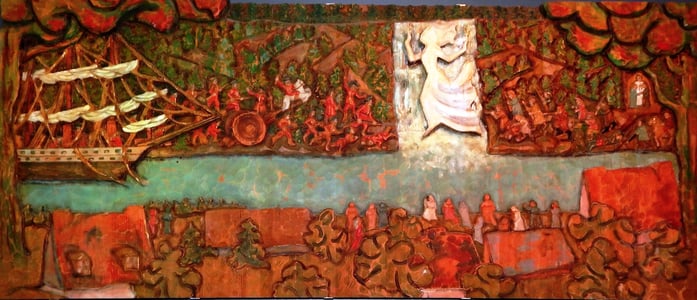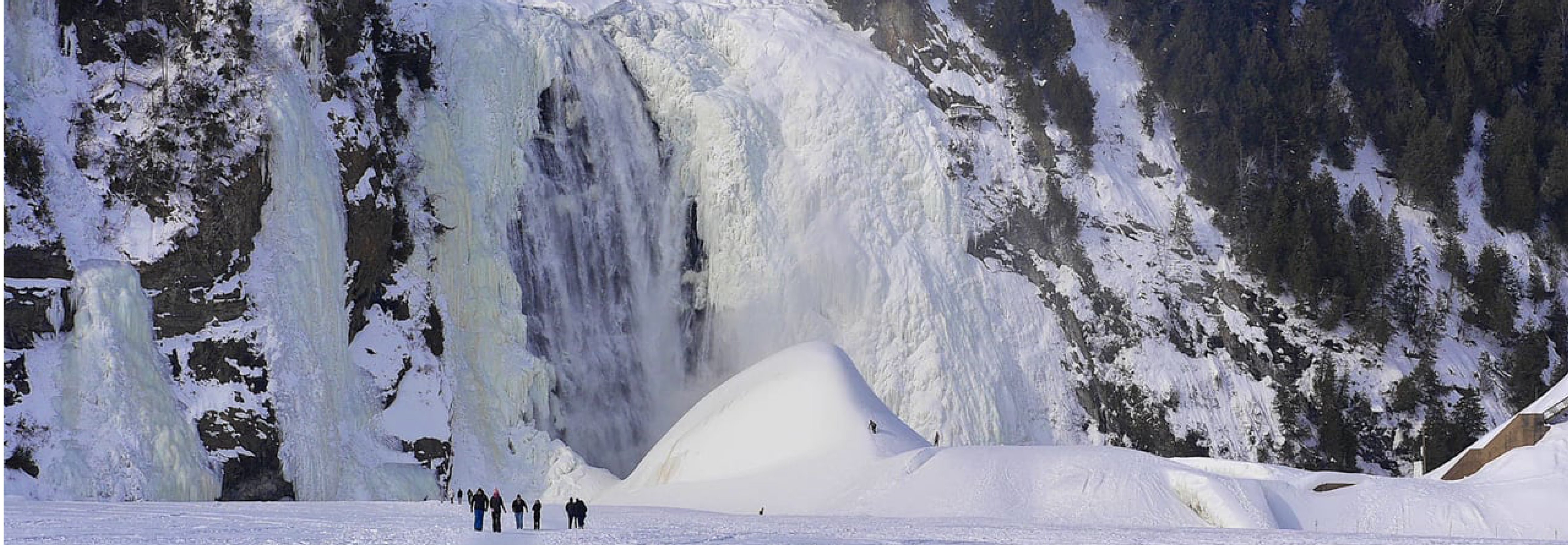We know what you’re thinking: “Waterfalls in Québec? At this time of year?! Have you lost your marbles?”
We haven’t lost our marbles … not yet at least. Whether it's January or June, the glorious Chutes Montmorency (Montmorency Waterfalls) is a must-see for any Quebec City school trip. Québec’s founder, Samuel de Champlain, named the falls after Henri II, duc de Montmorency, who served as the viceroy of New France in the 1620s. The falls are the tallest in the province – taller even than Niagara, in fact – and are host to spectacular views, stunning natural formations and French Canadian legends that could have been written by Nicholas Sparks.
Here are just three of Jumpstreet Tours' favourite things about these fabled falls:
1. The View

From below, all 275 feet of the Montmorency Waterfalls are an imposing tour-de-force that crash down into a shallow reservoir feeding the St-Laurence Seaway. A suspension bridge sits atop its crest, a popular destination for marriage proposals. The view from the bridge at this time of year reveals a majestic panoramic view of Quebec’s winter wonderland. Les brise-glace (ice-breakers) line the horizon, dutifully forging paths through the icy crags of the St-Laurence Seaway. The rolling hills of Île d'Orléans lie to the south, offering glimpses of le berceau de l’Amerique française (the cradle of French America). The Laurentian Mountains lie to the north, a vast expanse of billion-year-old formations that are now host to some of the best skiing in the world. Québec is home to many wonderful views, but this one surely takes the cake.

2. The Sugarloaf
Speaking of cake, Montmorency is great eye candy for the resident biologists and physicists on your school trips. In addition to the intricate ice formations that take shape around the falls, making for some pretty epic ice-climbing, it’s truly fascinating to see what a waterfall is capable of when its natural kinetic energy is up against the deep freeze of Québec City’s winter. When water travels fast, it generates energy, and that typically exerts heat. The energy generated by water plummeting from 275 feet can exert enough heat for evaporation to occur, even in the dead of winter. Once that steam hits the frigid air, though, it quickly cools and condenses. What results is a fine, powdery snow that settles at the bottom of the falls in an enormous mound that we call pain de sucre, or sugarloaf.
3. La légende de la Dame blanche
Québec was founded over 400 years ago, and the Montmorency Waterfalls have been a part of its history every step of the way. So it’s only natural that the falls inspire some of our most enduring folklore. Enter la Dame blanche, or the Lady in White. The legend tells the story of Rose, who was engaged to be married to a soldier during the infamous Seven Years’ War. In 1759 there was a pivotal battle between the French and the English at the base of Montmorency. The humidity of the falls caused the English army’s gunpowder to cake, rendering it useless. They retreated, and the French won the battle. Amongst the casualties, however, lay Rose’s fiancé. Heartbroken, Rose went into mourning and spent her days roaming the falls, calling out her fallen soldier’s name in vain. One night, in a state of shock, she put on her wedding dress and plunged herself into the falls, never to be found again. The story lives on to this day; some say that if you listen closely you can still hear her calling for her lost love against the roar of the falls.



